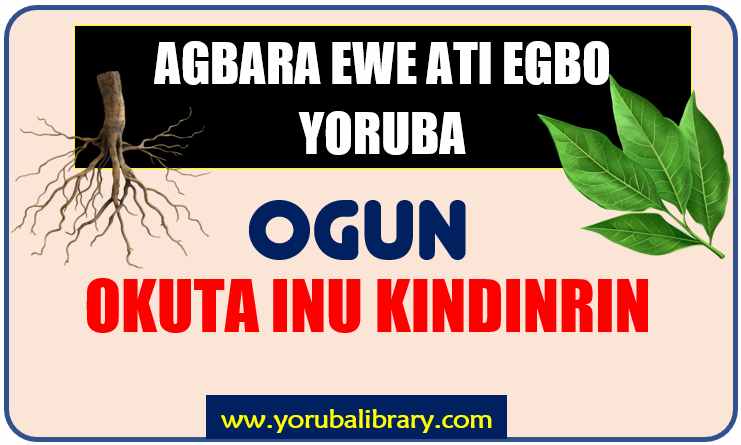
support@yorubalibrary.com
+2348073529208, 07038599574

Among the Yoruba, the health of internal organs, including the kidneys, is considered vital for overall balance and longevity. Kidney stones, known as Okuta Inu Kindinrin, were recognized as a serious condition that could cause excruciating pain, urinary difficulty, and long-term complications if untreated. Our ancestors developed Ogun Okuta Inu Kindinrin, a traditional healing system, combining herbal remedies, and lifestyle guidance. The medicine is more than just herbs — it is an approach that balances the physical body, strengthens the kidneys.
Our ancestors developed Ogun Okuta Inu Kindinrin, a traditional healing system, combining herbal remedies, and lifestyle guidance. The medicine is more than just herbs — it is an approach that balances the physical body, strengthens the kidneys.
The Yoruba believed that kidney health was linked to physical wellbeing. Pain or blockage in the kidneys was often seen as a sign of imbalance, impurities, or unseen interference. Elders prepared remedies that not only dissolved stones but also purified the urinary tract, fortified the kidneys, and restored balance to the body.
Even today, families continue to rely on these remedies as part of cultural heritage, especially when modern treatments are unavailable or as a complementary practice.
Disclaimer
Yoruba Library and its Team will not be held liable for improper usage or any loss arising from improper use, wrong application, inability to find needed materials, or misinterpretation of this article. This article is provided strictly for guidance and educational purposes.
Symptoms of Kidney Stones
Elders identified specific signs that indicated the presence of kidney stones:
• Sharp, stabbing pain in the lower back, sides, or abdomen
• Difficulty or pain during urination
• Blood in urine or unusual discoloration
• Frequent urge to urinate or incomplete voiding
• Irritability or restlessness due to persistent pain
• Fatigue from chronic discomfort
• Sensitivity to cold or heat in the lower back area
How Our Forefathers Treated Kidney Stone in the Past
Yoruba elders followed structured and careful methods to treat kidney stones:
1) Herbal decoctions —
Specific leaves, roots, and barks were boiled into teas that helped dissolve stones and ease urination (See below for sample leaf and roots)
2) Body purifications —
Baths or washes with selected herbs to stimulate kidney function and cleanse impurities.
3) Dietary guidance —
Foods that reduced stone formation and promoted kidney health.
4) Observation and adjustment —
Elders monitored the patient’s response, adjusting remedies as needed to ensure safety and effectiveness.
Find below some of the plants which our forefathers have used in treating Kidney stone previously:
1) Ewe Eruju
2) Ewe Abiwere
3) Ewe Odundun
4) Ewe Gbegi
5) Egbo Kokondo
6) Egbo Ewe Rinji Root)
7) Eso Gbegi
8) Eru Alamo
Have you heard of Yoruba Herb Dictionary? This contains names of Yoruba Leaf, Roots, Barks, Characteristics, Properties & Identification with HD Pictures. Order below or download sample here
A-Z HERBS & LEAF DICTIONARY #4KOne Yoruba proverb says "Bí olóde ò kú, òde rè kì í wu Gbégi". Do you know that Gbégi is actually a leaf/plant? Get Yoruba Proverbs on Plants and Herbs, which is a collection of Untold Wisdoms Hidden in Leaf and plants comprising their Life Applications & Moral Teachings. Order below or download sample here
YORUBA PROVERBS ON PLANTS #4KThe Healing Process in Traditional Practice
When preparing remedies for Okuta Inu Kindinrin, Yoruba elders followed structured steps to ensure both physical potency and spiritual alignment:
1. Collecting herbs, roots, or barks during specific times of the day believed to carry higher potency.
2. Purifying and pounding materials into powder, decoction, or tonic form.
3. Administering the first dose carefully to observe reaction before full usage.
4. Combining treatment with dietary restrictions to reduce stone formation and strengthen the kidneys.
Differences Between Yoruba and Modern Kidney Stone Treatment
While both Yoruba and modern systems aim to treat kidney stones, their approaches differ:
• Focus of healing —
Yoruba remedies emphasize body energy, organ health, and spiritual balance; modern medicine focuses on surgery, lithotripsy, or pharmaceutical dissolution.
• Materials used —
Yoruba healers relied on roots, leaves, and tonics; modern medicine uses drugs, lasers, or surgical techniques.
• Approach to recurrence —
Yoruba healing often included lifestyle, diet, and spiritual cleansing; modern treatment emphasizes follow-up imaging and preventive drugs.
Safety First: Important Contraindications and Considerations
a) Pregnancy and Lactation — Some herbs may be unsafe if mistakenly consumed by women.
b) Underlying Conditions — Individuals with kidney failure, hypertension, or diabetes must use remedies cautiously.
c) Quality of Source — Herbs from polluted or chemically treated areas are unsafe and must never be used.
Needed Materials (Leaves, Roots, Bark, etc.)
The medicinal approach for this requires careful selection of natural materials traditionally known to our elders. These are combined to ensure potency.
The instruction you will receive is the original account of our forefathers, preserved and tested over time. Many people have used them with testimonies of relief. Just ensure you follow the correct guidelines. Click Unlock Secret below
Application Process
The strength of Yoruba medicine depends on how materials are handled. Proper pounding, boiling, or steeping — done in the right way and at the right time — ensures the remedy remains potent. Click Unlock Secret below
Uses
The prepared remedy must be applied in the correct manner — whether for drinking, steaming, bathing, or chest rubbing — and taken in the right dosage for it to remain effective.
1) Some leaf required special utterances/chants before they can be effective. Where applicable, this will be stated in the PDF
2) The methods of getting the needed items like leaf, bark, roots by yourself is covered in the PDF
3) Saa bi Ologun ti wi, ki o le baa je... (Follow instructions for it to remain potent). You're getting a Real and Original account of our fore fathers.
With Numerous Satisfied Clients...